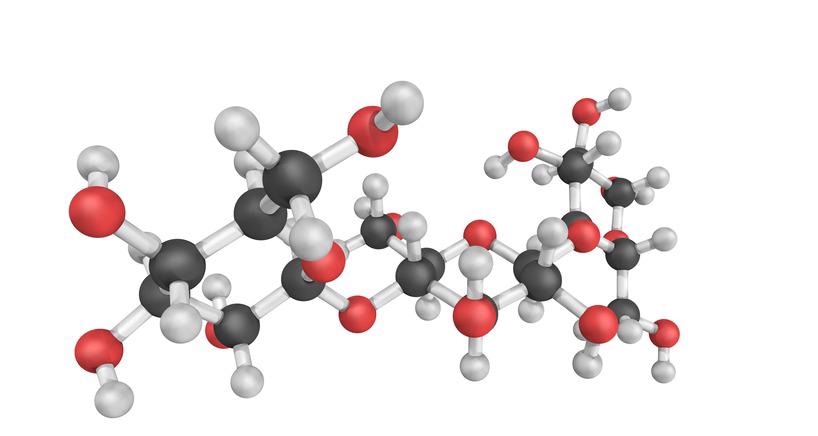.jpg) By Susha Cheriyedath, M.Sc.Reviewed by Skyla BailyJan 21 2022
By Susha Cheriyedath, M.Sc.Reviewed by Skyla BailyJan 21 2022A group of researchers recently published a paper in the journal Materials that demonstrated the suitability of a fluorescent cellulose wipe as an antiviral and antibacterial agent.

Study: Fluorescent Cellulose Wipe as a New and Sustainable Light-Activated Antibacterial and Antiviral Agent. Image Credit: ibreakstock/Shutterstock.com
Background
Bacterial infections are one of the major causes of death across the world, specifically in low-income countries. Moreover, viruses such as severe acute respiratory syndrome coronavirus 2 (SARS-CoV-2) lead to epidemics such as the ongoing coronavirus disease (COVID-19) pandemic are also responsible for a significant number of global deaths, affecting the normal lives of the people and the world economy.
Thus, reducing mortalities and morbidities due to viral and bacterial infections is crucial in the present context. Although antibiotics can successfully reduce bacterial infections, excessive use of these drugs can make them ineffective.
Hence, research and development of suitable alternatives such as antiviral and antibacterial agents are crucial for limiting the impact of bacterial infections and viral diseases. In this study, two cationic oligo(phenylene ethynylene)electrolytes (OPEs) with 1,4-diazabicyclo [2,2,2]-octane (c-OPE-DABCO) pendant groups and end-only imidazole (cOPE-Im) groups were synthesized and coated to the cellulose wipes in order to assess the effectiveness of the wipes as antiviral and antibacterial agents.
The Study
All chemicals used in the study were utilized without any purification. Compound II, compound IV, and compound VII were prepared before the study, while compound I, compound III, compound V, and compound VI were obtained for the study. The cOPE-Im was synthesized using compound IV, compound V, acetonitrile, and methanol solvent mixture, while the c-OPE-DABCO was prepared using compound IV, compound V, and dimethylacetamide. A Kimwipe piece was immersed in the prepared OPE deionized (DI) d water solution overnight at room temperature for coating.
Ultraviolet (UV)/visible (UV-vis) spectrophotometry was employed for testing different concentrations of OPE such as 2.5, 5, 10, 12, 15, 20 g/ml utilizing a quartz cuvette. The UV-vis spectrophotometry was also utilized for testing the photostability of the c-OPEs solution. For every study, different light irradiation time viz, 60, 30, 10, 5, and 2 minutes was used. A small coated wipe piece was immersed in a pre-measured volume of the phosphate buffer saline (PBS) solution for the delivery study.
The fluorescent properties of the sample were characterized using a fluorometer. An emission scan in the range of 347-600 nm and a pre-loaded excitation wavelength of 337 nm was applied to all samples. The log reduction was calculated for quantitively measuring the killing efficiency.
A media solution of SARS-CoV-2 with a concentration of 1 x 105pfu/mL and volume of 1 ml was added to the 1.5 ml tubes containing 15-50 mg of coated cellulose wipe in order to test the virus inactivation behaviors of the compound-coated cellulose wipe.
Could a New Antimicrobial Coating from Tree Proteins Improve Masks?
A single colony of Escherichia coli was cultivated for the study. Digital photos were captured for characterizing the antibacterial performance of different samples. Wipes not coated with the compound were used as a negative control for the study. The long wave ultraviolet A (UVA) lamps were employed for incubating the samples at room temperature, and the plaque assay was utilized for quantifying infectious viruses present in the sample. The virus inactivation efficiency was quantitively measured by calculating the log activation.
Observations
Although both cOPE-Im and c-OPE-DABCO demonstrated an absorbance peak at λmax≈ 327 nm, cOPE-Im displayed a higher peak value of absorbance (Abmax) than c-OPE-DABCO at the same concentration due to relatively lower molecular weight. No absorbance peaks were observed in the c-OPE solutions after the coating process, indicating complete absorption of the OPE. The absorption efficiency measured in the c-OPE coated wipe was 4.76 mg/g.
Both c-OPE coated wipes demonstrated a robust fluorescence under the irradiation of the UV lamp, and a sharp emission peak during emission scans. These observations indicate a successful coating process. The c-OPE-Im showed a higher fluorescence (FL) peak intensity than cOPE-DABCO owing to the lower molecular weight compared to cOPE-DABCO. Both coated wipes exhibited a “red shift”, indicating either an aggregation of cOPEs molecules or its interaction with the cellulose fibers in the coated wipes.
Observations from the prescreen study indicated that only wipes coated by c-OPE-Im of 10 μg/mL effectively contributed to the total killing efficiency under the condition of 30 min of irradiation and 10-1diluting factor. Even after reducing the total irradiation time, the log kills of W-Im were higher than W-DABCO. The results indicated greater effectiveness of W-Im than that of W-DABCO as an antibacterial agent.
No killing efficiency was observed in the uncoated cellulose wipes. Observations from the delivery study indicated the existence of interactions between c-OPEs and the wipe. Further observations in the delivery study showed a higher delivery rate for W-DABCO-30 μg/mL than that of W-Im-30 μg/mL owing to different guest-host reactions caused by the molecular structures of cOPE-Im and c-OPE-DABCO.
Significance
This study demonstrated that specific interactions between the cellulose wipe and c-OPE successfully drive the cellulose wipe coating process and create highly fluorescent materials. The c-OPE-Im-coated wipe displayed a remarkable killing efficiency against E. coli under 5-10 min of light-activation and considerable inactivation of SARS-CoV-2 under 20-30 min of light activation.
Thus, the sustainable nature of cellulose wipes and the promising antiviral and antibacterial performance of the compound make the new surface-coated wipes attractive as antiviral and antibacterial agents.
Disclaimer: The views expressed here are those of the author expressed in their private capacity and do not necessarily represent the views of AZoM.com Limited T/A AZoNetwork the owner and operator of this website. This disclaimer forms part of the Terms and conditions of use of this website.
Source:
Zhang, Z., Whitten, D.G., Kell, A. Fluorescent Cellulose Wipe as a New and Sustainable Light-Activated Antibacterial and Antiviral Agent. ACS Materials Letters 2022, 4, 356-362. https://pubs.acs.org/doi/10.1021/acsmaterialslett.1c00605